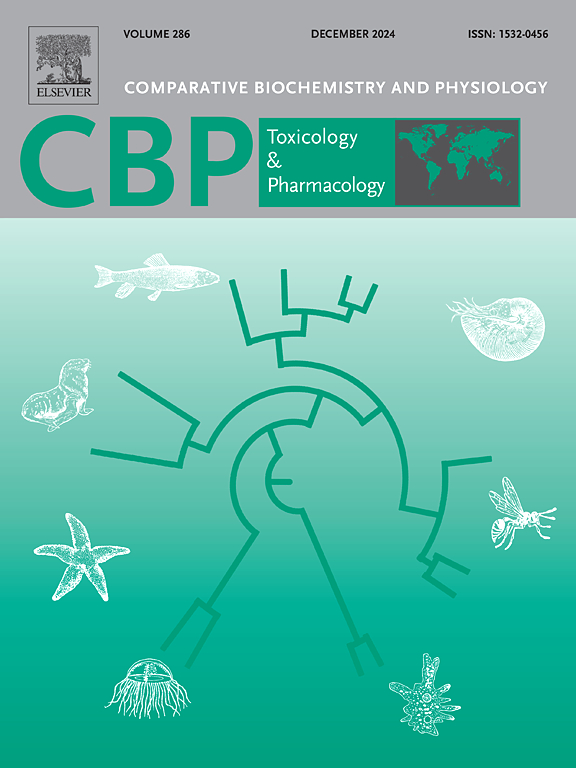Paraquat neurotoxicity: Oxidative stress and neuronal dysfunction in the ascidian brain
IF 3.9
3区 环境科学与生态学
Q2 BIOCHEMISTRY & MOLECULAR BIOLOGY
Comparative Biochemistry and Physiology C-toxicology & Pharmacology
Pub Date : 2025-01-22
DOI:10.1016/j.cbpc.2025.110128
引用次数: 0
Abstract
Paraquat (PQ) is a widely used herbicide; however, it has been linked to various diseases, including an increased risk of developing Parkinsonism. To study this, invertebrates such as ascidians have been used. They have a simple nervous system and are considered an emerging model for the study of neurodegenerative diseases. Here, we investigated the effects of PQ in the brain of the ascidian Styela plicata. We performed behavioral tests, assessed morphology, and monitored oxidative stress and the expression of tyrosine hydroxylase (TH) and caspase-3 (Casp 3) using immunofluorescence. In the presence of PQ, siphon movement was reduced and cortical thickness was increased. In addition, an observed increase in ROS was detected, along with attenuated SOD and CAT activities and increased LPO production. Interestingly, PQ downregulated the expression of TH and upregulated that of Casp 3. We conclude that PQ-induced oxidative stress leads to the death of catecholaminergic neurons in the S. plicata brain.

百草枯神经毒性:海鞘脑的氧化应激和神经元功能障碍。
百草枯(PQ)是一种广泛使用的除草剂;然而,它与多种疾病有关,包括患帕金森氏症的风险增加。为了研究这一点,研究人员使用了海鞘等无脊椎动物。它们有一个简单的神经系统,被认为是研究神经退行性疾病的新兴模型。在此,我们研究了PQ在海鞘褶皱海鞘脑中的作用。我们进行了行为测试,评估形态学,并使用免疫荧光监测氧化应激和酪氨酸羟化酶(TH)和半胱天冬酶-3 (casp3)的表达。PQ存在时,虹吸运动减少,皮质厚度增加。此外,观察到ROS增加,SOD和CAT活性减弱,LPO生成增加。有趣的是,PQ下调了TH的表达,上调了casp3的表达。我们得出结论,pq诱导的氧化应激可导致皱褶s脑中儿茶酚胺能神经元的死亡。
本文章由计算机程序翻译,如有差异,请以英文原文为准。
求助全文
约1分钟内获得全文
求助全文
来源期刊
CiteScore
7.50
自引率
5.10%
发文量
206
审稿时长
30 days
期刊介绍:
Part C: Toxicology and Pharmacology. This journal is concerned with chemical and drug action at different levels of organization, biotransformation of xenobiotics, mechanisms of toxicity, including reactive oxygen species and carcinogenesis, endocrine disruptors, natural products chemistry, and signal transduction with a molecular approach to these fields.

 求助内容:
求助内容: 应助结果提醒方式:
应助结果提醒方式:


